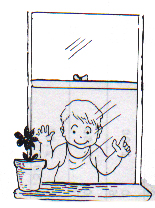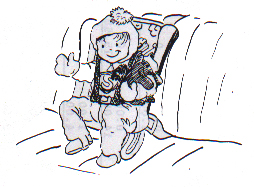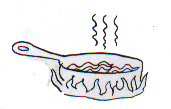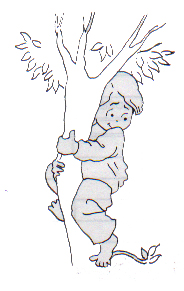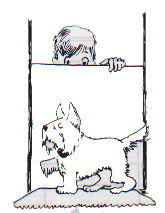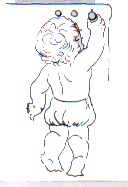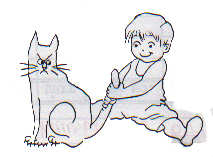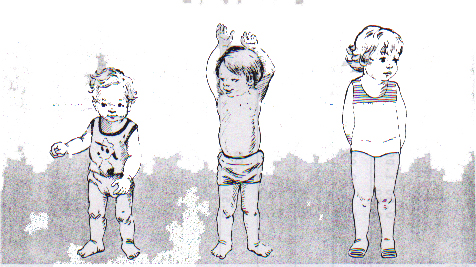 This collection of student work is from Frank Keim's classes. He wants to share these works for others to use as an example of culturally-based curriculum and documentation. These documents have been OCR-scanned and are available for educational use only.
This collection of student work is from Frank Keim's classes. He wants to share these works for others to use as an example of culturally-based curriculum and documentation. These documents have been OCR-scanned and are available for educational use only.Special | A | B | C | D | E | F | G | H | I | J | K | L | M | N | O
P | Q | R | S | T | U | V | W | X | Y | Z | ALL
Dangers and Safeguards during Toddlerhood:DANGERS AND SAFEGUARDS DURING TODDLERHOOD
Toddlers like to investigate any opening.
Parents should close and lock all windows because toddlers
have enough strength to open a window and crawl through it
or to slam windows shut on their fingers. Parent should examine all toys to make
sure they are safe. The eyes on dolls and stuffed animals
should be securely fastened so a toddler cannot pull them
off and swallow them. Tops with pointed ends are dangers,
and no toys should have sharp edges. Toddler should be placed in safety seats
whenever they ride in cars. Toddlers like to reach for things on
shelves. By grabbing the bottom can on a kitchen shelf, they
could cause the dangerous avalanche. Parents must supervise their toddlers' activities
to warn them of dangers and to prevent
accidents. Matches should never be left within reach
of young children. Handles on all pots and pans should be
turned toward the back of the stove to prevent inquisitive
toddlers from pulling them down. As toddlers' physical skills improved,
they may try to climb anything in sight and end up in
danger. Parents need to know where their toddlers are and
what they are doing at all times. Door should be closed or barricaded to
prevent toddlers from gaining access to potential dangers
areas. Toddlers are not sufficiently aware of
the dangers of traffic. They will run after a pet or a
rolling ball without thinking of oncoming cars or
buses. Toddlers are fascinated by knobs. The may
turn stove burners on or off. Children can be warned to stay
away from the stoves, but parents also need to beware of
what they are doing at all times. Toddlers think all pets are friendly.
They should be warned that what they consider a friendly pat
or squeeze may cause an animal to scratch or
bite. Toddlers continue to grow quickly. By age three, a
typical child will have grown to over half of his or her
final height. Boys are generally taller and heavier than
girls. The approximate change in height is from 30 - 31 inches
to 35 - 37 inches (from 76 - 79 cm to 89 - 94 cm). The
approximate change in weight is from 21 - 22 pounds to 31 -
33 pounds (from 9.5 - 10 kg to 14 - 15 kg).
| |||||||||||||||
| |||||||||||||||



